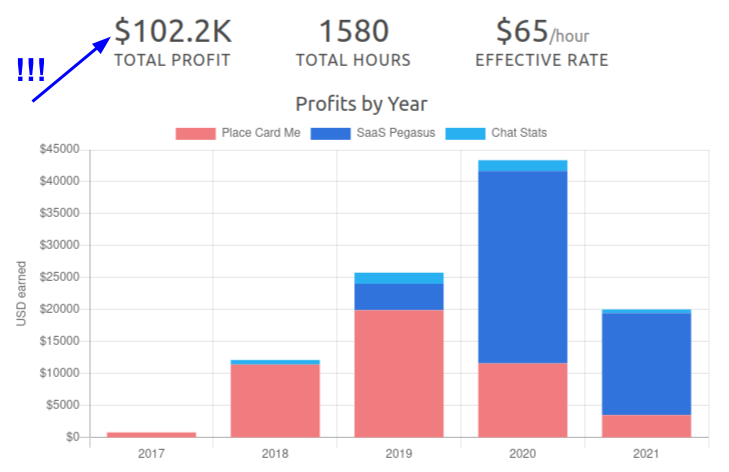$100,000 from side projects
by Cory ZueAfter more than four years of indie hacking I’ve finally managed to earn $100k from my projects!

The income breakdown is about 50/50 between SaaS Pegasus - a Django SaaS boilerplate, and Place Card Me, a wedding place card generator, with $5k coming from Chat Stats - an analytics tool for GroupMe groups (if you don't know what that means I'm not surprised).
I'm not sure I have any real wisdom to share on this milestone. It's been a long, slow grind with every product. What I will say, is that big numbers aren't as hard as you think. They just take time and consistency.
In my case I started indie hacking with the goal of earning just $1. That took almost 5 months. But the next dollar only took a few days. And now, more than half my amount have come in the last year (something that I think has been true almost the entire time I've been doing this).
My timeline to big milestones looks like this:
$0 - $1: 5 months
$1 - $10: 6 weeks
$10 - $100: 3 weeks
$100 - $1000: 2 months
$1000 - $10,000: 10 months
$10,000 - $100,000: 30 months
There's a complete set of income and effort broken out by product on my open startup dashboard.
On to $1 million!

